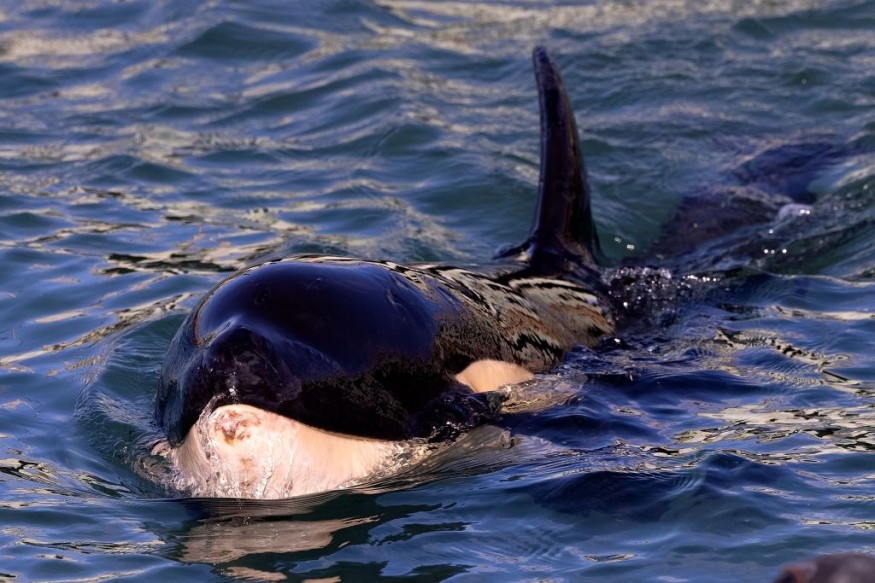
99% of the endangered southern resident orcas may have experienced an increase in the occurrence of skin diseases, such as sores, due to human-induced obstacles to finding enough food, hearing, or communicating with one another, according to findings made by scientists.
Skin Lesions on 99% of Orcas
Based on visual evidence, 99% of the orcas under study had skin lesions. Over time, these lesions, which included gray patches and targets, increased in frequency.
Scientists are worried about the lesions' potential link to the diminishing physical health, immune system strength, and population health of the endangered orcas.
The cause and health effects of the lesions are still unknown.
Only 73 southern resident orcas were counted in the most recent census, which was the lowest number since the 1970s. Images submitted to the study by the Center for Whale Research showed six different forms of lesions, including erosions, gray patches, targets, indentations, and discolorations.
Possibly Related to Immune System
No link between orca fatalities and lesions was discovered by researchers working under the direction of SeaDoc Society science director Joseph Gaydos.
The orcas' decrease is most likely symptomatic rather than caused by the lesions.
However, Gaydos and his team worry that the problem might be becoming worse because they have noticed an increase in immune system-related incidents.
These lesions can be a sign that the orcas' immune systems are being suppressed by further environmental stressors or outside elements.
It highlights the necessity to make investments in the recovery of salmon (orca's favorite food), lessen boat disturbance, and deal with other issues affecting the survival of the southern people.
The study made the assumption that climate change, deteriorated coastal ecosystems, and increased solar ultraviolet radiation worsen diseases, but there wasn't enough evidence to support this claim.
The most likely reason, according to the experts, is an infectious agent, such as bacteria, fungi, or viruses.
The research looked at the orcas' overall well-being through the condition of their skin, adding to their health records and igniting more investigation into lesions and other health issues in orcas.
Recovery Plan and Population Decline
The southern residents were added to the Endangered Species Act's list of threatened species in 2005, and a recovery plan was completed in 2008.
They were included in NOAA's 2015 initiative "Species in the Spotlight" to draw attention to and protect the marine species that are most in danger.
Generally speaking, the southern inhabitants confront at least three threats that are making it difficult for them to survive: a scarcity of Chinook salmon in their foraging zone, pollution, and underwater noise that disrupts their hunting behavior.
According to recent studies, the southern resident orcas are spending less time in the San Juan Islands, where they usually spend the summer, since there are fewer Chinook salmon to consume.
Researchers found that between 2004 and 2020, sightings of the southern people in the archipelago decreased by 75%. That coincided with a 50% decrease in the amount of Chinook salmon, the preferred meal of orcas, in the Fraser River in British Columbia.
That study follows recent research that discovered southern resident females hunt less successfully than their northern neighbors, and that a declining, inbred population of southern residents may be on the verge of extinction, Seattle Times reports.
The peer-reviewed research by the team of Gaydos and Giles was published in the journal Public Library of Science PLOS ONE this month.
Related Article : Mysterious Whale Deaths Continue on the US East Coast, Experts Weigh In in Increasing Toll
© 2025 NatureWorldNews.com All rights reserved. Do not reproduce without permission.





